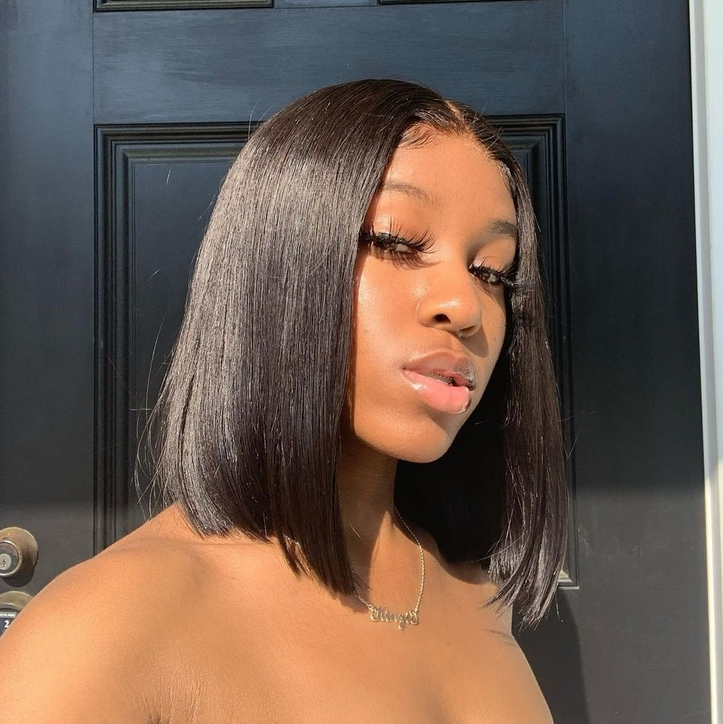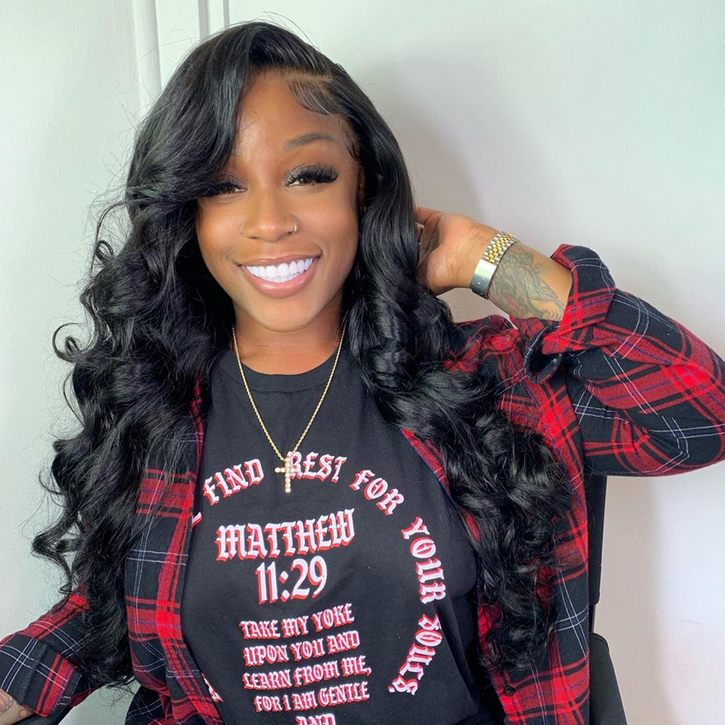How To Cut Angled Bangs | The Asymmetrical Layered Fringe
One of the greatest opportunities to make an impact on guests is with fringe. Andrew Carruthers, Director of Education for Sam Villa, shares a technique for creating layered asymmetrical bangs with texture and movement that creates an unexpected focal point of interest.
Carruthers focuses on layering the interior of the fringe first and then refines the perimeter. “Try using a dark comb on light hair and a light comb on darker hair, it helps you to see your guide well because of the contrast of color,” says Carruthers.
How to create an asymmetrical layered fringe:
• Wrap dry hair to see the natural movement.
• Take a triangle section at the fringe area.
• The first section should start over the right eye for short to long going right to left – reverse it for going left to right.
• Take a vertical section from top of the triangle to hairline and elevate it 90 to actual head shape to layer while cutting.
• Using a Sam Villa Signature Series 7” Dry Cutting Shear, point cut (fairly deeply) to the head shape to create fringe with a raw edge that is soft and hugs the head shape.
• Elevate the second section vertically, over direct it to the first section and follow the guide
• Take another section and over direct it to the same original guide at the top of the right eye – because the starting guide is all the way on the right, it creates a lot of length on the left when over directing. Finish triangle section.
• To refine the perimeter, pick up hair with the wide teeth of a Sam Villa Signatures Series Short Cutting Comb, and following the curve of the eyebrow, point cut to desired length.
Make an impact with an Asymmetrical Layered Fringe!
Learn more about the Sam Villa Signature Series 7" Dry Cutting Shears at https://www.samvilla.com/pro/products/...
Don't forget to subscribe and like this video for more hair cutting tutorials! Also, follow @samvillahair on Instagram for quick tips, tricks and techniques.
Hi everyone and refer other Syria education director for Sam via Fringe is one of our greatest opportunities to make a big impact on many of our guests, and this particular Fringe is going to be a great one for adding a lot of texture and a lot of Movement with a nice tilt for a focal point, so the way that we're setting this up is the first thing is to part off the area that is going to become the fringe. We want to be really careful and make sure that we're not including hair that actually wants to sit more to the side, or vice versa, possibly not bringing hair forward into that fringe area. That really wants to live in that. So we did a nice blow-dry. Just a wrap dry to see what the natural movement was going to do and then just part it off this little triangular area that creates our fringe. Our first section is going to start over her right eye. If I want it to go from short to long from right to left, I'm going to start over the right. If I want to reverse it, I'm just going to start on the left-hand side, I'm going to take a vertical section just coming off at the top of that triangle, and what we're going to do is we're going to elevate it to 90 degrees to the actual Head shape now the reason we're you're going to do. That is because we want to actually layer this as we're cutting a lot of what Sam and I talked about, is working smarter, not harder and having an efficiency in our approach. I could go in and put in the perimeter first and then come back and layer. It but it's a waste of time, so I'm going to layer first and then refine the perimeter. Second. So again, elevation is 90 degrees to the head shape, which means working around the head and then I'm going to just point cut in my cutting line and that's going to mimic the head shape. So I'm actually working very rounded. This is going to get the fringe to fall, really soft and hug the head shape, while still giving me a very raw edge to it. I'M going to go a little bit shorter, so again, 90 degrees of elevation come in and then point cut and I'm doing a fairly deep point cut. So I'm using the 7-inch dry cutting shear, which also makes quick work of the more rigid dry hair. So as I comb that down that first section, you'll notice that I have a nice amount of layer and texture moving right over the top of that right. I don't worry about this stuff out here yet because remember we're cutting the interior first and then we come to the exterior. The next section is going to again be a vertical section. Moving off to the left-hand side now and my first section is going to become a stationary guide, so my over direction is always working back to that original point. So again, 90 degrees of elevation right, there's my guide and then I point cut to that guide. Now be careful not to cut back into your previously cut section, because you already established the texture that you want in that previously cut section, so the tips of my shears are just barely nipping at the very long ends of the previous cut section. I don't want to cut back into it. I take another vertical section: kind of pie shaping off that high point and then again over-direct all the way to my stationary guide over top of the right eye, another point cut and just keep over directing back to that stationary guide and then follow the head shape. I'M also using a dark comb because she has blonde hair. If she had dark hair, I would go with a light comb. This just helps a lot with visually, seeing everything that I'm doing - and I actually can see my guide extremely clearly because of the contrast with the hair, so that last section is just that corner over top now of her left eye, and you can see because I Established that stationary guide all the way over here on her right, I have a lot of length that builds up off to the left. Now again, we have all this stuff happening down here and we're going to refine that. But what I want you to notice is how much texture and movement I have on the surface, because I started with the layer. So final step now is to come in and refine that perimeter. This is cool because you also have the options of leaving it kind of longer and turning it into more of a swept fringe, or at this point we can also come in and really create a statement by going a little shorter. So I'm going to drape that into the wide teeth of my comb and I'm just going to point cut away the links. Don'T worry, I'm not cutting all of my layer off with that process. If you not notice, I still have these shorter bits here and that's why I went into the layer first so again pick up the hair drape into the wider teeth. Follow my angle. Allow the comb to actually give you your visual angle and follow the line of the comb. Then last section pick up that last piece drape into the comb, follow the angle and then take off that last little bit of length. Now, what you have is a really nice layered tilted fringe again, starting with that interior part, creating my layer first and then refining the perimeter. So all it would take now is just a really soft bevel from the sleeker iron. To give her a nice finish and then some shine flash and that's how you achieve a tilted layered fringe, really quick, really simple! Thanks for watching once again Andrew Carruthers, here education director for Santa you,





Comments
Samuel David: Beautiful fringe! Question, when your layering a fringe before cutting the perimeter how do you how much to take off so you have enough hair for the desired length of the fringe, but also short enough so you don't end up cutting off your layers? Thanks guys, love your videos!
Gina D'Andrea: This video does a great job explaining how to cut the interior layers, but I don't understand how to cut the perimeter. Can you please make z video about that?
Denise Pfahl: Beautiful skilled cut and I love the look; has a lot of life and falls right! I cannot get anyone to cut my hair so it falls right and I end up tying it back because of that! I have been everywhere in this town, and I never seen anyone in my travels around town that has a nice haircut either so I could even ask who did it...I dont think people can cut hair in this town. I have gone to upscale salons and still get lousy cuts. I would travel to find someone like this stylist! Where is his salon?
Vanda Alexander: I used your technique. I'm in LOVE with my bangs... I grunged it up a little : ) Getting so many compliments. Thank you.
ivy wu: I love this fringe !!
Carleece walker: beautiful done!!!!!!
Ciji mayo Lomax: This is too hard to do. Wish there was an easier way to do it.
T Weba: Love it
Vidhi M: NYC. Thank u so much.
Ahmed Shehata: very nice
zain akbar: sam your tecnuiqus r amazing
Cathy Hall: i want this hella cute
drrhelms54: I don't care for this angle at all.